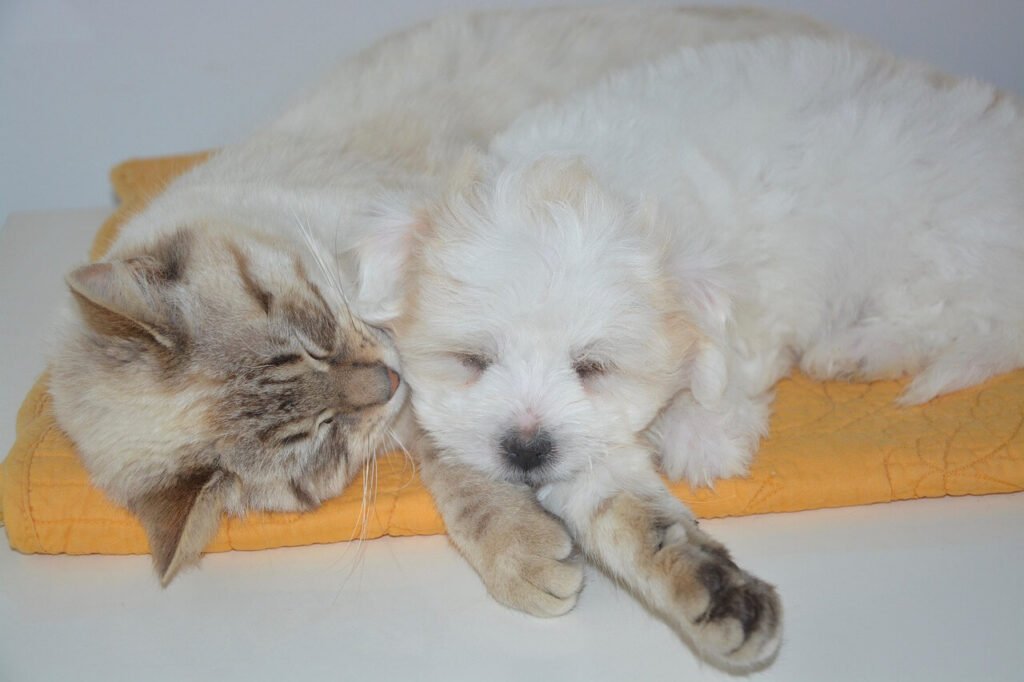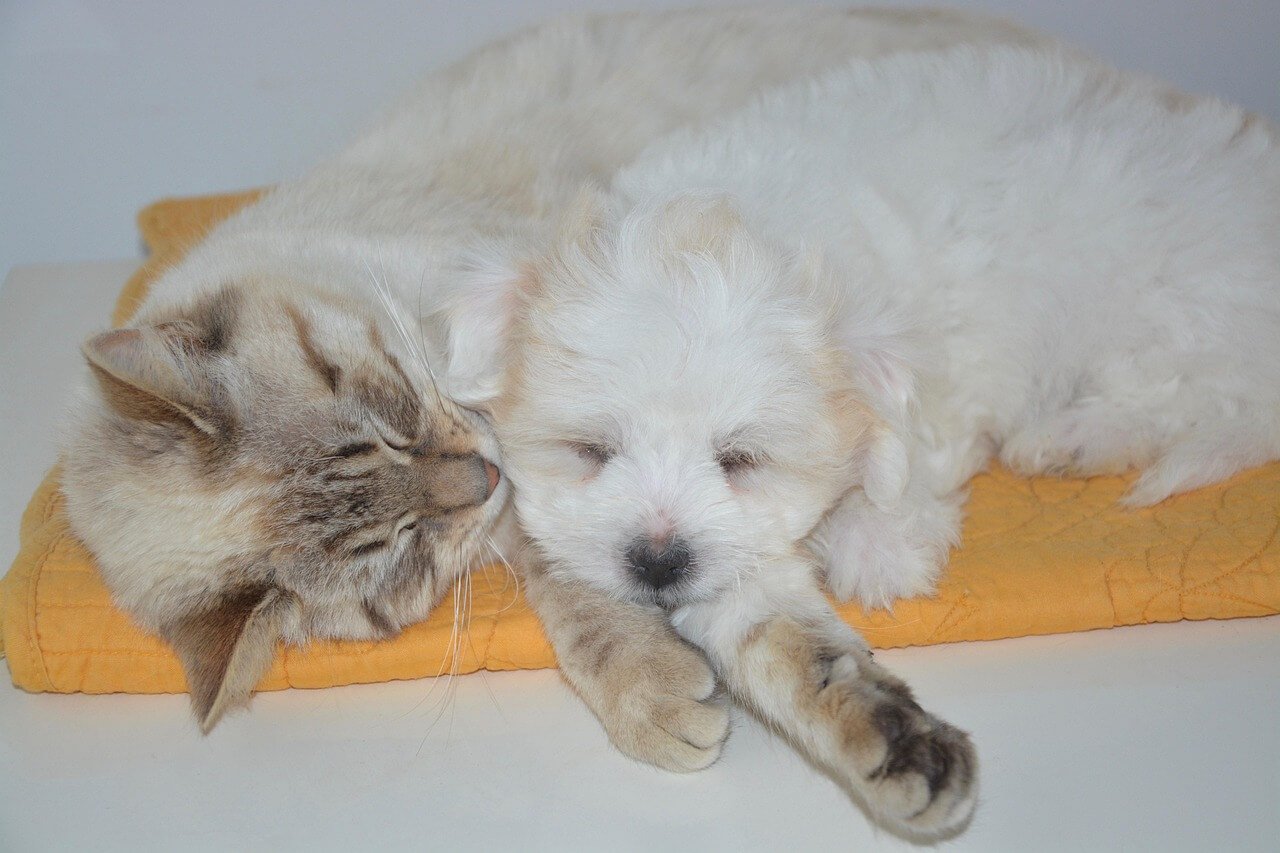Signs My Dog Wants to Kill My Cat: Recognizing the Warning Signals
Bringing a dog and a cat together under one roof can be a recipe for chaos—or harmony, depending on their personalities. While many dogs and cats coexist peacefully, some dogs may display behaviors that suggest they view your feline friend as prey or a rival. Understanding the signs that your dog might want to harm your cat is crucial for ensuring everyone’s safety. From subtle cues to overt aggression, recognizing these warning signals allows you to intervene before things escalate. In this guide, we’ll explore the behaviors to watch for, how to interpret them, and what steps you can take to foster a safer environment for both pets.
What Are the Warning Signs That Your Dog May Harm Your Cat?
Dogs communicate their intentions through body language and actions. If your dog exhibits any of the following behaviors around your cat, it’s essential to address the situation promptly to prevent potential harm.
Staring Intently at the Cat :
A fixed, unblinking gaze often indicates predatory focus or dominance.Growling or Snarling :
Vocalizations like growls or snarls are clear signs of aggression or discomfort.Chasing the Cat Relentlessly :
Persistent chasing, especially when paired with excitement or barking, can escalate quickly.Stiff Body Posture :
A rigid stance with raised hackles suggests tension or readiness to attack.Ignoring Commands Around the Cat :
If your dog becomes unresponsive to commands in the presence of the cat, it may signal fixation.
These behaviors don’t necessarily mean your dog will harm your cat, but they do indicate underlying issues that need attention. Early intervention can make all the difference in fostering a peaceful household.
Recognizing the Quiet Cues That Indicate Trouble
While overt aggression is easier to spot, some dogs display more subtle signs of predatory behavior toward cats. These quieter signals can be just as dangerous if left unchecked.
Whining or Whimpering :
High-pitched sounds near the cat may indicate frustration or pent-up energy.Pawing at the Cat :
Repeated attempts to touch or grab the cat can escalate into rough play or worse.Freezing in Place :
A sudden stillness while watching the cat is a common precursor to a chase.Obsessive Following :
Shadowing the cat’s every move suggests an unhealthy level of interest.Resource Guarding Near the Cat :
Growling or snapping if the cat approaches food or toys shows territorial instincts.
Subtle behaviors can easily go unnoticed, but they’re important indicators of potential conflict. Addressing these early can help prevent bigger problems down the line.
Check this guide 👉Can Cats Eat Dog Food? Best 7 Health Tips!
Check this guide 👉How to Stop Your Dog from Chasing the Cat: Best 7 Tips!
Check this guide 👉How to Stop Your Dog from Eating Cat Poop: Best 7 Tips!

Preventive Measures | Immediate Actions to Take |
|---|---|
Supervise interactions between dog and cat | Separate the pets immediately if aggressive behavior occurs |
Train basic obedience commands like “leave it” | Redirect your dog’s attention with toys or treats |
Provide separate safe spaces for each pet | Consult a professional trainer for guidance |
Reward calm behavior around the cat | Use barriers like baby gates to create distance |
Exercise your dog regularly to reduce energy | Avoid punishing either pet during conflicts |
How to Keep Both Pets Safe During Interactions
When introducing or managing a dog-cat relationship, taking proactive steps is key to preventing harmful incidents. Here are some actionable tips to keep everyone safe:
Supervise All Interactions :
Never leave your dog and cat alone together until trust is established.Teach Impulse Control :
Reinforce commands like “sit,” “stay,” and “leave it” to manage your dog’s impulses.Use Positive Reinforcement :
Reward your dog for calm, non-aggressive behavior around the cat.Create Escape Routes for the Cat :
Ensure your cat has access to high perches or hiding spots to retreat if needed.Monitor Play Styles :
Discourage roughhousing or overly energetic play that could frighten the cat.
By implementing these measures, you can build a foundation of mutual respect and safety. Consistency is key to helping both pets adjust successfully.
Steps to Foster Harmony Between Your Dog and Cat
Creating a balanced environment where both pets feel secure requires patience and effort. Here are some long-term strategies to promote peace:
Gradual Introductions :
Allow your dog and cat to meet slowly, starting with scent exchanges and short, supervised visits.Separate Feeding Areas :
Feed your pets in different rooms to avoid competition over resources.Provide Enrichment Activities :
Engage your dog with interactive toys and activities to channel excess energy productively.Respect Individual Boundaries :
Give each pet their own space where they can relax without interference.Monitor Stress Levels :
Watch for signs of anxiety or discomfort in either pet and adjust accordingly.
With time and dedication, even challenging relationships can improve. The goal is to create a shared space where both pets thrive.
Decoding Your Dog’s Nonverbal Cues Around the Cat
Dogs communicate a lot through body language, and understanding these signals can help you gauge their intentions toward your cat. By paying attention to subtle movements and postures, you can better predict whether your dog poses a threat.
Tail Position :
A high, stiff tail often indicates alertness or dominance, while a wagging tail doesn’t always mean friendliness—it could signal excitement or agitation.Ears Forward or Back :
Ears pointed forward suggest focus or curiosity, while flattened ears may indicate aggression or fear.Lip Licking or Yawning :
These behaviors can signify stress or discomfort in the presence of the cat.Crouching Low to the Ground :
This stance is common in stalking behavior and may precede an attempt to chase or pounce.Piloerection (Raised Hackles) :
Raised fur along the back signals arousal, which could be linked to aggression or fear.
By learning to interpret these cues, you’ll be better equipped to intervene before a situation escalates. Awareness is the first step toward ensuring both pets feel safe and secure.
How to Tell If Your Cat Is Uncomfortable Around the Dog
While much of the focus is on the dog’s behavior, it’s equally important to monitor how your cat reacts to the dynamic. A stressed or frightened cat can escalate tensions, so recognizing their signs of distress is crucial.
Hissing or Swatting :
These defensive behaviors are clear indicators that your cat feels threatened.Flattened Ears :
When a cat pins their ears back, it’s a sign of fear or readiness to defend themselves.Puffed-Up Tail :
A bushy, upright tail suggests the cat is trying to appear larger and more intimidating.Hiding More Than Usual :
Increased hiding or avoiding shared spaces indicates discomfort around the dog.Growling or Vocalizing :
Unusual vocalizations like growls or loud meows can signal anxiety or frustration.
A stressed cat is more likely to provoke a negative reaction from the dog, creating a cycle of tension. Addressing your cat’s needs for safety and comfort is just as important as managing your dog’s behavior.
Building a Lasting Peace Between Your Dog and Cat
Creating harmony between your dog and cat requires ongoing effort and adaptability. These long-term strategies will help solidify their relationship and minimize conflicts over time.
Routine Supervision :
Regularly monitor interactions to ensure both pets remain calm and respectful.Consistent Training :
Reinforce good behavior daily with rewards and positive reinforcement techniques.Environmental Enrichment :
Provide plenty of toys, scratching posts, and activities to keep both pets mentally stimulated.Gradual Desensitization :
Slowly increase the amount of time they spend together, rewarding calm behavior consistently.Professional Guidance :
Consider working with a certified animal behaviorist if challenges persist despite your efforts.
With patience and dedication, even the most challenging relationships can improve. Remember, fostering trust takes time, but the reward is a peaceful home where both pets thrive.
Frequently Asked Questions About Dogs and Cats Living Together
Can dogs and cats ever truly get along?
Yes, many dogs and cats form strong bonds with proper introductions and training.
How do I stop my dog from chasing my cat?
Use positive reinforcement to reward calm behavior and redirect their attention.
What should I do if my dog attacks my cat?
Immediately separate them and consult a professional trainer or behaviorist.
Is it safe to leave my dog and cat alone together?
Only if you’re confident in their ability to coexist peacefully; otherwise, supervise.
Why does my dog bark at my cat constantly?
Barking may stem from excitement, frustration, or a desire to interact—train impulse control to address it.
Final Thoughts: Ensuring a Safe and Happy Home for Both Pets
Living with a dog and a cat can be rewarding, but it also comes with challenges. Recognizing the signs that your dog may want to harm your cat is the first step toward creating a harmonious environment. By understanding their behaviors, setting boundaries, and fostering positive interactions, you can help both pets feel secure and valued. Remember, patience and consistency are essential when navigating interspecies relationships. With love and effort, your furry companions can learn to share your home—and maybe even become friends!
Understanding Scabs in Dogs Ears: Best 7 Tips! Learn how to identify, treat, and prevent scabs in your dog’s ears for optimal ear health.
Is Cinnamon Bad for Dogs? Best 7 Health Tips! Discover safe ways to use cinnamon, risks to avoid, and expert advice to keep your dog healthy.
Can Dogs Get Pneumonia from Humans? Best 7 Tips! Learn how to protect your dog, understand transmission risks, and ensure their respiratory health.
Can Dog Urine Make You Sick? Best 7 Health Tips! Learn how to stay safe, prevent illness, and handle exposure to dog urine effectively.





